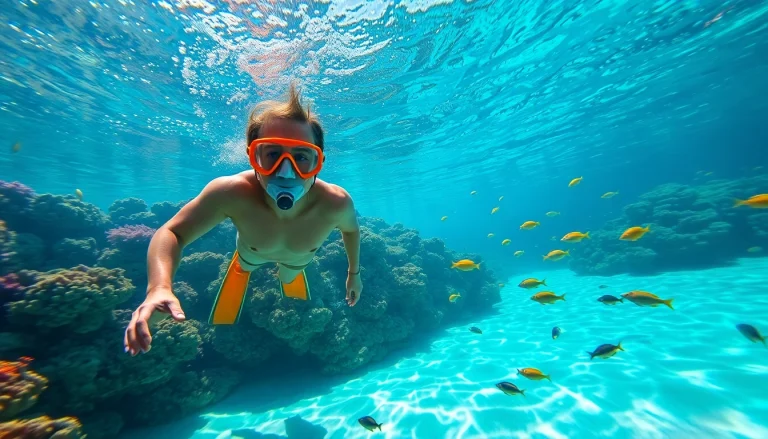Introduction to Everest Base Camp via Gokyo Lakes Trek
The Everest Base Camp via Gokyo Lakes Trek is a mesmerizing journey that combines breathtaking landscapes, diverse cultures, and the thrill of trekking in one of the highest regions on Earth. As adventurers set forth on this route, they encounter some of the most stunning vistas in the Himalayas, including the renowned Gokyo Lakes—deep turquoise bodies of water surrounded by towering peaks. This trek not only takes you to the revered Everest Base Camp, but also offers a unique perspective of the majestic mountains, all while providing an exhilarating challenge for trekkers.
One of the key highlights of embarking on the Everest Base Camp via Gokyo Lakes Trek is the opportunity to experience the natural beauty of the region paired with rich cultural experiences. The Sherpa villages along the trek provide insights into the lifestyle of the locals, while the stunning landscapes create an unforgettable backdrop for this once-in-a-lifetime adventure.
What Makes This Trek Unique?
This trek is characterized by its route, which diverges from the more common paths taken by trekkers heading to Everest Base Camp. While many take the standard route, the Gokyo Lakes option presents a variety of unique experiences:
- Gokyo Lakes: The serene, high-altitude lakes are a sight to behold with their vibrant blue colors contrasting against the stark landscapes and snow-capped peaks.
- Cho La Pass: The challenging high pass at 5,420 meters (17,782 feet) sends trekkers on an exhilarating climb, rewarding them with spectacular views of the surrounding mountains.
- Less Crowded: Compared to the traditional Everest Base Camp route, the Gokyo trek tends to be less crowded, allowing for a more peaceful and intimate experience with nature.
- Cultural Insights: The trek offers a chance to connect with the local Sherpa communities, learning about their traditions, hospitality, and the stories embedded in the mountains.
Understanding the Route and Highlights
The journey offers a plethora of highlights that can be experienced throughout the trek. Following the initial flight from Kathmandu to Lukla, trekkers embark on the journey through picturesque Sherpa villages such as Namche Bazaar, known as the gateway to the Himalayas.
In addition to Namche, trekkers set their sights on various iconic sites:
- Gokyo Valley: En route, trekkers reach the Gokyo Valley where they will be surrounded by a series of beautiful turquoise lakes, including Gokyo Lake.
- Gokyo Ri: This peak provides one of the best panoramic views of the Everest massif, including multiple other towering peaks like Lhotse and Makalu.
- Everest Base Camp: The final destination, where trekkers stand at the foot of the world’s highest peak, rejoicing in the achievement after an arduous journey.
Detailed Itinerary for the Trek
Day-by-Day Breakdown of the Journey
A typical itinerary for the Everest Base Camp via Gokyo Lakes Trek spans approximately 12 to 15 days, depending on the route and acclimatization needs. Below is a detailed day-by-day breakdown of what trekkers can typically expect:
- Day 1: Arrival in Kathmandu – Arrival at Tribhuvan International Airport, followed by a brief orientation session about the trek.
- Day 2: Fly to Lukla and trek to Phakding – A scenic flight to Lukla to begin the trek, followed by a short hike to Phakding.
- Day 3: Trek to Namche Bazaar – Ascending through lush landscapes, trekkers enjoy views of the first glimpse of Everest before reaching Namche Bazaar.
- Day 4: Acclimatization in Namche – A day to explore the local area, including optional hikes to nearby viewpoints.
- Day 5: Trek to Dole – Moving towards Gokyo, trekkers get acquainted with the rugged terrain and stunning surroundings.
- Day 6: Trek to Gokyo – Arriving in Gokyo Valley, trekkers can relax by the lakes.
- Day 7: Gokyo Ri and back to Gokyo– An early morning hike to Gokyo Ri for incredible views before descending back to Gokyo.
- Day 8: Crossing Cho La Pass and reaching Dzongla – A challenging day crossing the Cho La Pass with breathtaking views along the way.
- Day 9: Trek to Gorak Shep – Proceeding to Gorak Shep, the last settlement before heading to Everest Base Camp.
- Day 10: Everest Base Camp and back to Gorak Shep – The much-anticipated hike to the base camp and back to Gorak Shep for the night.
- Day 11: Return trek to Pheriche – Descending through familiar landscapes, enjoying views from different angles.
- Day 12: Trek to Namche Bazaar – Retracing steps back to the vibrant Namche Bazaar.
- Day 13: Trek to Lukla – The final descent to Lukla where celebratory meals are often shared.
- Day 14: Fly back to Kathmandu – Returning to Kathmandu to reflect on the adventure.
- Day 15: Departure – Departure from Kathmandu.
Alternate Routes and Optional Activities
For those looking to customize their trekking experience, various alternate routes and activities can enhance the journey.
- Three Passes Trek: An extension that includes the challenging Kongma La, Renjo La, and Cho La passes.
- Day Hikes: Additional hikes to nearby peaks or valleys can be incorporated on rest days.
- Cultural Tours: Engaging with local communities for a richer cultural experience.
Cultural Insights Along the Trek
Along the trail, trekkers encounter a rich tapestry of Sherpa culture. Their traditions, beliefs, and incredible warmth provide a unique backdrop to the adventure. Highlights include:
- Monasteries: Visits to ancient monasteries such as the Thame Monastery offer insights into Buddhist practices.
- Local Markets: Exploring local markets in Namche and Gokyo for unique handicrafts and food.
- Festivals: Participation in local festivals, if the timing aligns, adds an authentic and dynamic element to the experience.
Physical and Mental Challenges of the Trek
Understanding Trek Difficulty Levels
The Everest Base Camp via Gokyo Lakes Trek is classified as a challenging trek and is suitable for experienced trekkers. Key physical challenges include:
- Altitude: The trek reaches altitudes over 5,000 meters (16,404 feet), requiring strong acclimatization practices.
- Terrain Features: Trekkers navigate rocky paths, steep ascents, and descents that demand physical endurance.
- Weather Conditions: Trekkers must be prepared for variable weather, including cold temperatures and potential snowfall.
Acclimatization Strategies for High Altitudes
Effective acclimatization is crucial for a successful trek. Strategies include:
- Gradual Ascent: Ascend slowly to allow the body to adapt to changes in altitude.
- Stay Hydrated: Consuming adequate fluids helps mitigate symptoms of altitude sickness.
- Listen to Your Body: Anyone feeling symptoms should take rest and, if necessary, descend to a lower altitude.
Building Mental Resilience for Trekkers
Mental resilience is equally as important as physical strength on this trek. Techniques include:
- Mindfulness and Breathing Exercises: Practicing mindfulness helps maintain focus and calmness during tough climbs.
- Setting Realistic Goals: Breaking the trek into manageable distances makes it less overwhelming.
- Supportive Group Dynamics: Encouraging surroundings foster mental strength, and trekking with a group can provide invaluable support.
Accommodation and Amenities on the Trek
Lodging Options in the Region
Throughout the trek, trekkers stay in basic yet comfortable teahouses, offering a glimpse into local hospitality. Common features of these accommodations include:
- Shared Rooms: Dormitory-style rooms promote interaction on the trek.
- Basic Amenities: Facilities may be simple but usually include clean bedding and communal bathrooms.
- Warm Meals: Most teahouses serve hearty meals that are essential for recovering energy after long days.
Nutrition and Meal Planning During the Trek
Maintaining a healthy diet is crucial during the trek. Nutritional advice includes:
- Hydration: Regular intake of water to stay hydrated—consider water purification options.
- Energy-Dense Foods: Consuming carbohydrates for energy, alongside proteins for recovery.
- Local Flavors: Embracing local cuisine enhances the cultural experience, with options like dal bhat and momo being favorites.
Access to Essential Services Along the Route
Despite the remote location, essential services are relatively accessible. Access points include:
- Medical Facilities: Basic medical facilities are available in Namche Bazaar and Gokyo.
- Communication: Wi-Fi and mobile networks are accessible in major villages, allowing contact with the outside world.
- Rest Areas: Numerous rest stops along the way provide safety and comfort at critical stages of the trek.
Tips for a Successful Trekking Experience
What to Pack for Your Journey
Packing the right gear is essential for a successful trek. Recommendations include:
- Proper Footwear: Sturdy hiking boots are crucial for stability and comfort.
- Layered Clothing: Dress in layers to adapt to fluctuating temperatures.
- First Aid Kit: A well-stocked first aid kit for emergencies enhances trek safety.
Managing Environmental Impact While Trekking
As the number of trekkers increases, eco-conscious practices are vital. Key considerations involve:
- Leave No Trace: Trekkers should carry out all trash and leave natural settings undisturbed.
- Support Sustainable Practices: Engage with local organizations that prioritize environmental conservation.
- Educate Yourself: Learn about the region’s ecology to foster respect and responsibility.
Community Engagement: Supporting Local Economies
Engaging with local economies supports both the community and the environment. Ways to do this include:
- Stay Locally: Opt for locally-owned teahouses and lodges.
- Buy Local Products: Purchase goods from local artisans to support their craftsmanship.
- Participate in Community Events: Join cultural events organized by locals for a more immersive experience.























+ There are no comments
Add yours